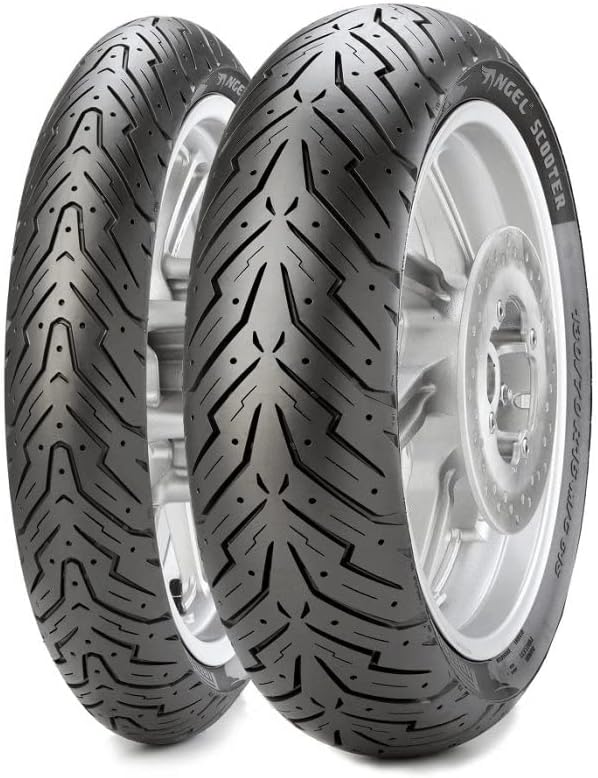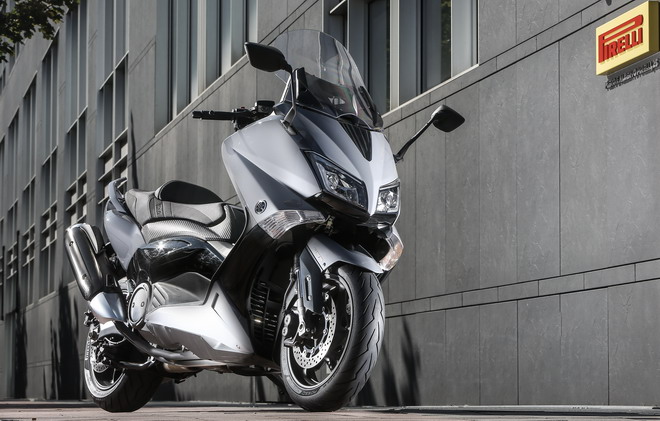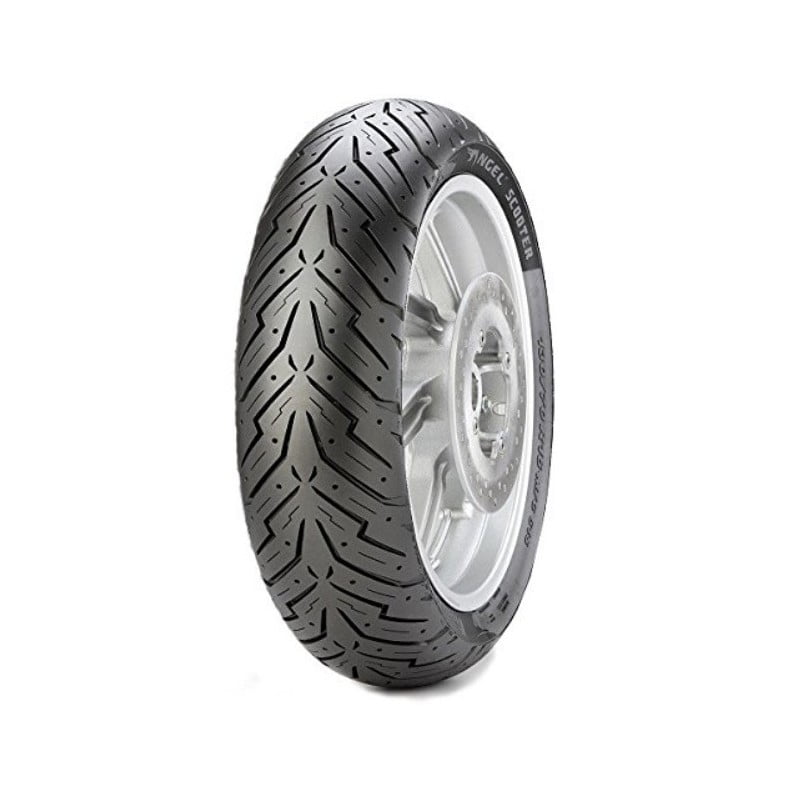Discovering the Pirelli Angel Scooter Tires
Recently, I took a leap of faith and decided to give my trusty scooter a significant upgrade. Having heard a lot about them, I opted for the Pirelli Angel Scooter tires. And believe me, they certainly did not disappoint. With dimensions of 120/80 for the rear and a front tire size of 180/16, these tires are an impeccable fit for my scooter.
Initial Impressions and Mileage
The first thing I noticed post-installation was the distinct “virgin whiskers” on the tires, a clear sign of their newness. At present, I’ve covered approximately 100 miles on these tires. This distance is spread over two, possibly three, rides. On each ride, I covered a distance of about 50 miles, and interestingly, even after these rides, the whiskers are still visibly intact. This showcases the resilience and minimal wear the tires have undergone in the initial stages.
Understanding the Pirelli Naming Conventions
Upon a closer look at the tires, you can observe what is colloquially known as the “chicken strip.” To give you a sense of its width, it’s roughly the size of my pinky – approximately three-eighths of an inch, slightly less than half an inch.
One fascinating aspect of Pirelli’s naming convention that I’ve come to appreciate is their straightforward approach. With Pirelli, “Angel” typically signifies sport touring tires. On the other hand, if you come across “Diablos,” it’s an indication that they are sport-centric tires.
Design & Compound Analysis
The Pirelli Angel Scooter tires sport a tread design that mirrors their regular sport bike touring tires. This raises a question for many: is the compound identical? To be honest, I am uncertain about whether the compound is the same. Nevertheless, during my recent rides, the performance and feel of these tires stood out, especially when I began to push their limits.
Performance Experience
Upon embarking on my initial rides with these new tires, I began with a casual pace, aiming to get a genuine feel of them. However, as I grew more confident, I started to push the tires harder, and I was astounded by their performance. The grip they offered was impressive. I was reminded of the sensation of riding a sport bike. The way I could lean into curves, carve the roads, and the sheer predictability of the tires were remarkable. There wasn’t a single moment where I felt they might slip or step out of line. Comparing them to the original equipment (OE) tires that came with the scooter, these Pirelli Angel Scooter tires are far superior. In hindsight, I can’t even recall the exact model of the OE tires, but the difference in grip and overall feel is day and night.
Smoothness & Ride Comfort
The smoothness with which these tires roll is worth mentioning. Not only do they provide an exhilarating riding experience, but they also ensure a comfortable one. This amalgamation of performance and comfort is precisely what riders seek. Whether it’s braking, traction, cornering, or simple transitions from one side to another during swift lane changes, these tires handle it all with ease.
Tire Shape & Comparison
Observing the shape of the Pirelli Angel Scooter tires, they are notably rounded. This rounded crown is typical of sport touring tires. In comparison, actual sport bike tires possess a more triangular shape, which can be flatter towards the edges and pointed towards the center. However, the Pirelli Angel Scooter tires maintain a consistent curve, which might be contributing to their exceptional road performance.
Initial Impressions of the Pirelli Angel Scooter Tires
As we venture into the peak of summer, specifically the first week of July, I find myself greatly appreciating the Pirelli Angel Scooter tires. Currently, I’m preparing for a road trip that includes Sturgis and later, Pikes Peak.
By the trip’s end, I anticipate the tires might be nearing their lifespan’s end. However, the exact longevity remains uncertain. For reference, the original OE tires endured almost five and a half thousand miles.
Assessing Longevity: What’s the Mileage?
Currently, my scooter boasts just over five and a half thousand miles. Of this, the OE tires consumed roughly 5,000 miles, with my contribution being around 500 miles. While it’s too early to definitively comment on the lifespan of the Pirelli Angel Scooter tires, my frequent mountain rides might offer a clue. Riding in mountainous terrains tends to expedite tire wear, especially when coupled with an aggressive riding style, both of which are characteristics of my riding. The same aggressive approach can be attributed to my frequent front brake pad replacements.
Performance in Varied Conditions
The real testament to these tires’ efficacy lies in their adaptability to varied conditions. While I’ve predominantly used them in summer, their performance in rain remains a topic of curiosity. A preliminary look at the tire grooves suggests adequate design for rain, mirroring the typical efficiency of sport touring tires in wet conditions. These tires boast more voids, which should theoretically enhance water displacement. However, increased voids imply reduced surface area contact, potentially compromising traction. It’s a delicate balance and trade-off between efficient water displacement and maintaining optimal traction.
Pirelli Angel Scooter Tires: Wet Weather Performance
One lingering question for many riders is the adaptability of the Pirelli Angel Scooter tires in the rain. Unfortunately, as of now, I cannot provide a firsthand account of their rain performance. Another area of curiosity revolves around their longevity. While I remain hopeful for a lifespan of around 5,000 miles, certain factors might influence this estimate. For instance, road trips, predominantly on straight roads rather than twisty mountain terrains, tend to extend the tire’s life. But based on my regular riding habits on more challenging terrains, I’ve noticed that tires tend to wear out faster. As a general observation, most of my tires, depending on the brand and type, last approximately three and a half thousand miles.
The Impact of Bike Specifications on Tire Longevity
The bike’s specifications, particularly its torque and horsepower, play a pivotal role in determining tire lifespan. High torque, high horsepower bikes tend to exhaust sport-touring tires faster, typically around three and a half thousand miles in my experience. On the other hand, with lower torque, lower power bikes, these tires might last an impressive 10,000 miles or even more.
As a case in point, my Zero SR 2018 boasted around 115 units of torque, equivalent to the powerful Honda Gold Wing, yet only 70 horsepower. When paired with sport-touring tires, they lasted merely three and a half thousand miles. A similar experience was observed with my Yamaha xsr 900, a bike recognized for its substantial torque and considerable horsepower. Historically, sport-touring tires like the Michelin Road Fours would last only about three and a half thousand miles on this bike. Yet, the same tires on bikes with reduced power and torque specifications could extend up to 10,000 miles. The bottom line is that the bike’s specifications, combined with riding conditions, substantially influence tire longevity.
Conclusion
In the realm of scooter tires, the Pirelli Angel Scooter tires have exhibited promising initial results in terms of performance and comfort. While their adaptability in wet conditions remains to be fully assessed, their longevity seems to be intertwined with the nature of the bike and one’s riding habits. Nevertheless, these tires offer an intriguing option for riders seeking a blend of performance and durability.






